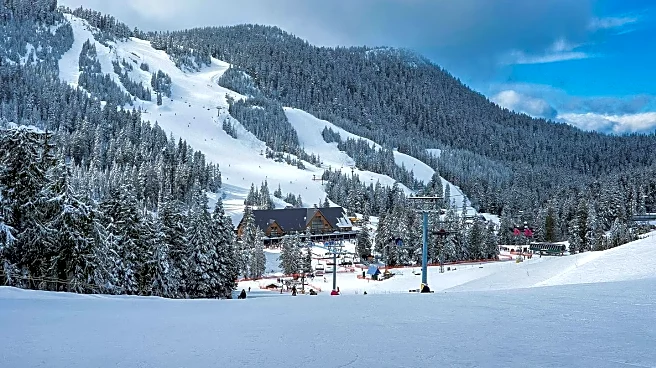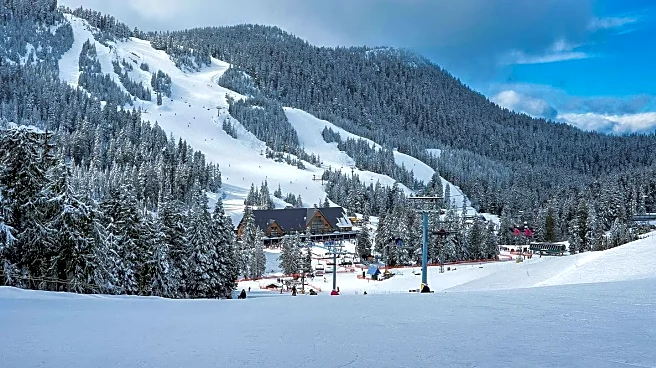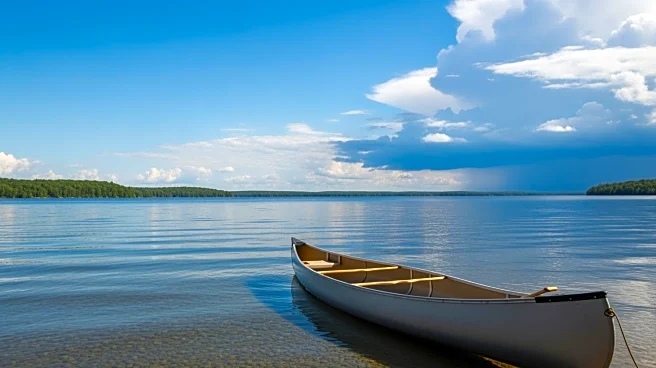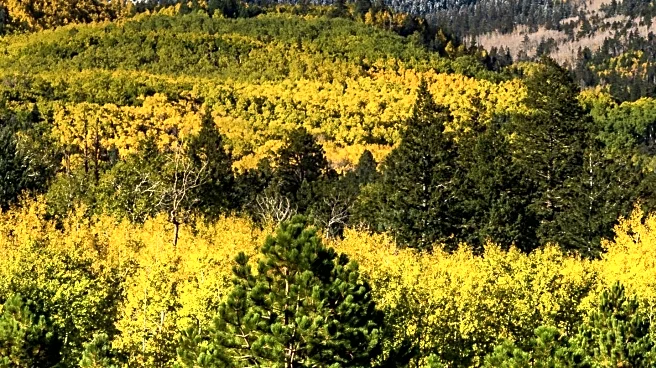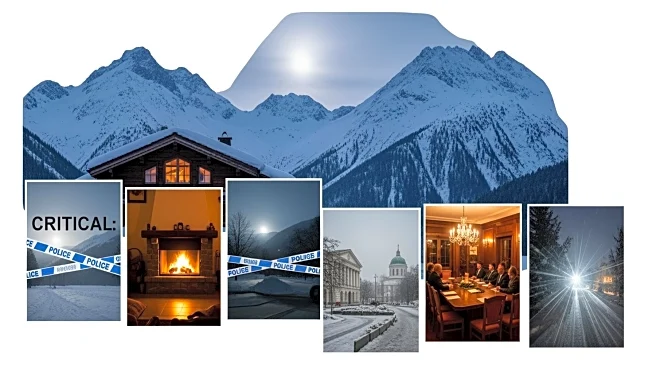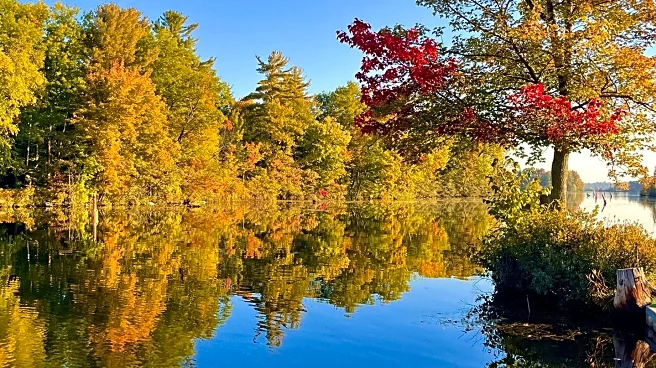What's Happening?
Big Sky Resort, located in the Rocky Mountains, has expanded its skiable terrain to over 5,800 acres, making it one of North America's largest ski areas. This expansion includes the integration of Moonlight
Basin, unifying the north and east faces of Lone Mountain. The resort is renowned for its challenging in-bounds terrain, featuring a 4,350-foot vertical drop and the iconic Lone Peak Tram. Areas like the Headwaters and Big Couloir offer steep, long chutes that require sign-out with ski patrol. Big Sky averages over 400 inches of snowfall annually, providing ideal conditions for expert skiers. The resort has also seen the rise of exclusive private members' clubs, such as the Spanish Peaks Mountain Club and the Yellowstone Club, which have reshaped the area's social landscape.
Why It's Important?
The expansion of Big Sky Resort and the development of luxury amenities have significant implications for the local economy and real estate market. The resort's growth attracts a new clientele seeking both extreme adventure and privacy, boosting tourism and creating a demand for high-end accommodations. The presence of private clubs and luxury real estate developments contributes to the area's economic diversification, offering opportunities for investment and employment. This evolution reflects broader trends in the ski industry, where resorts are increasingly catering to affluent visitors seeking exclusive experiences.
What's Next?
As Big Sky Resort continues to expand, it may further develop its infrastructure and amenities to accommodate the growing number of visitors. The resort's focus on luxury and exclusivity could lead to additional partnerships with high-profile chefs and brands, enhancing its appeal to upscale clientele. The integration of new terrain and facilities may also prompt discussions on environmental impact and sustainable development, as the resort balances growth with preservation of the natural landscape.
Beyond the Headlines
The transformation of Big Sky Resort into a luxury destination highlights the changing dynamics of ski tourism, where exclusivity and privacy are increasingly valued. This shift raises questions about accessibility and inclusivity in outdoor recreation, as high costs may limit access for average skiers. The rise of private clubs and luxury real estate developments also reflects broader societal trends towards gated communities and privatized leisure spaces, potentially influencing cultural perceptions of skiing and mountain resorts.
